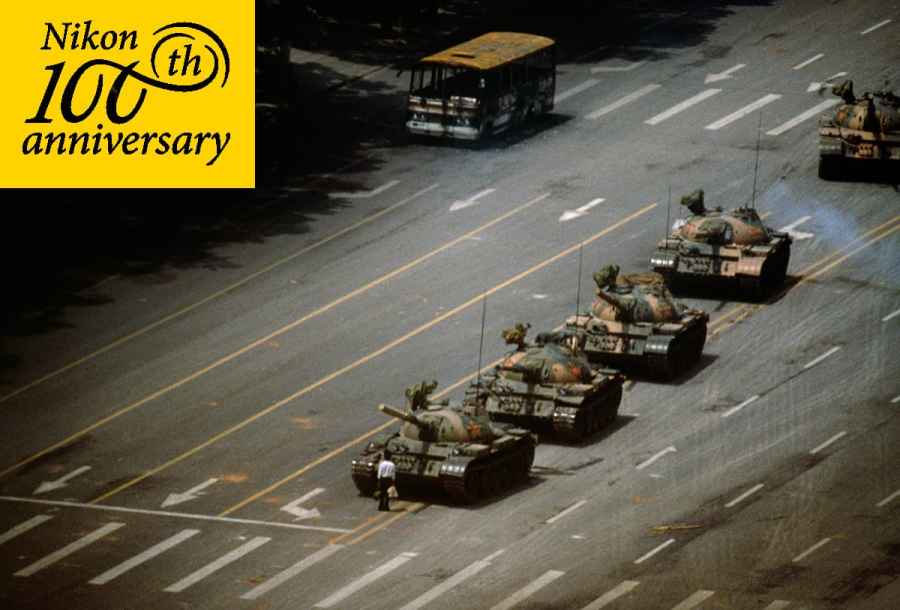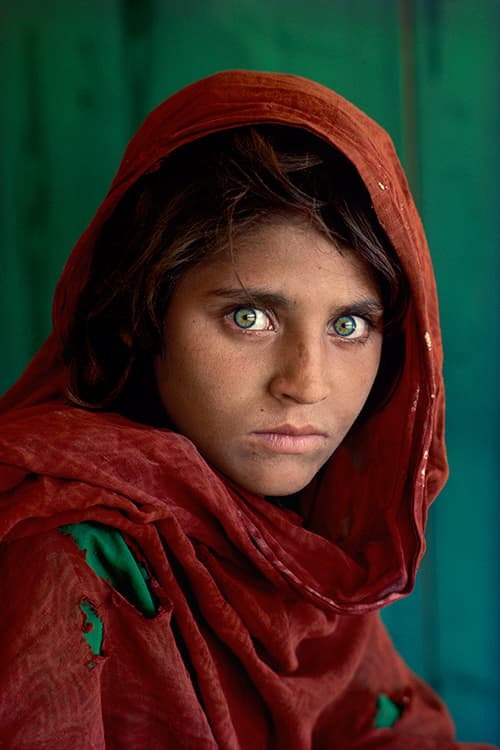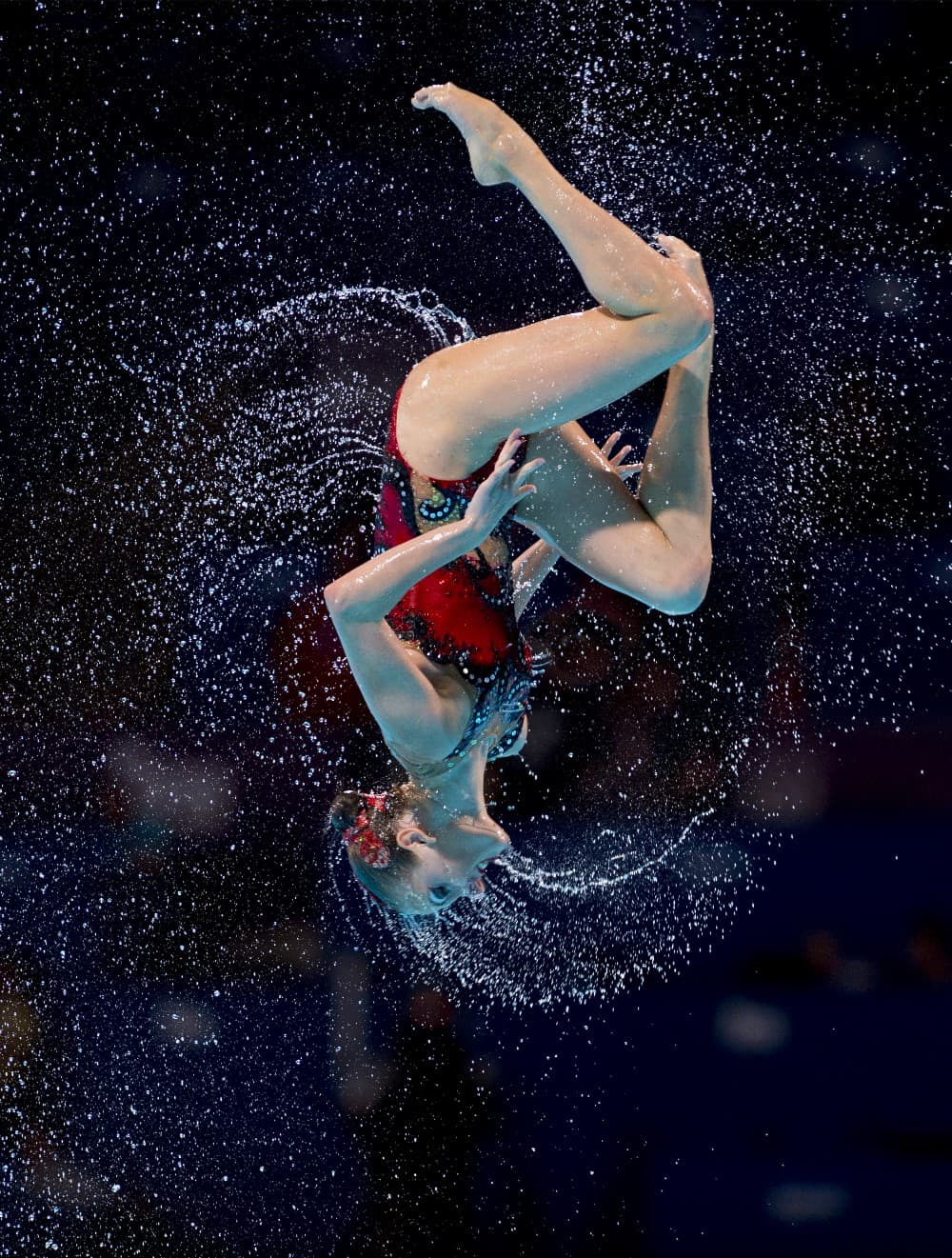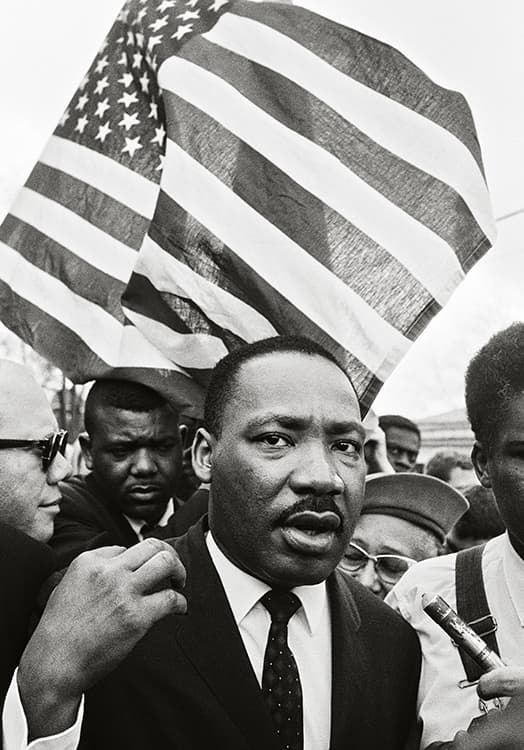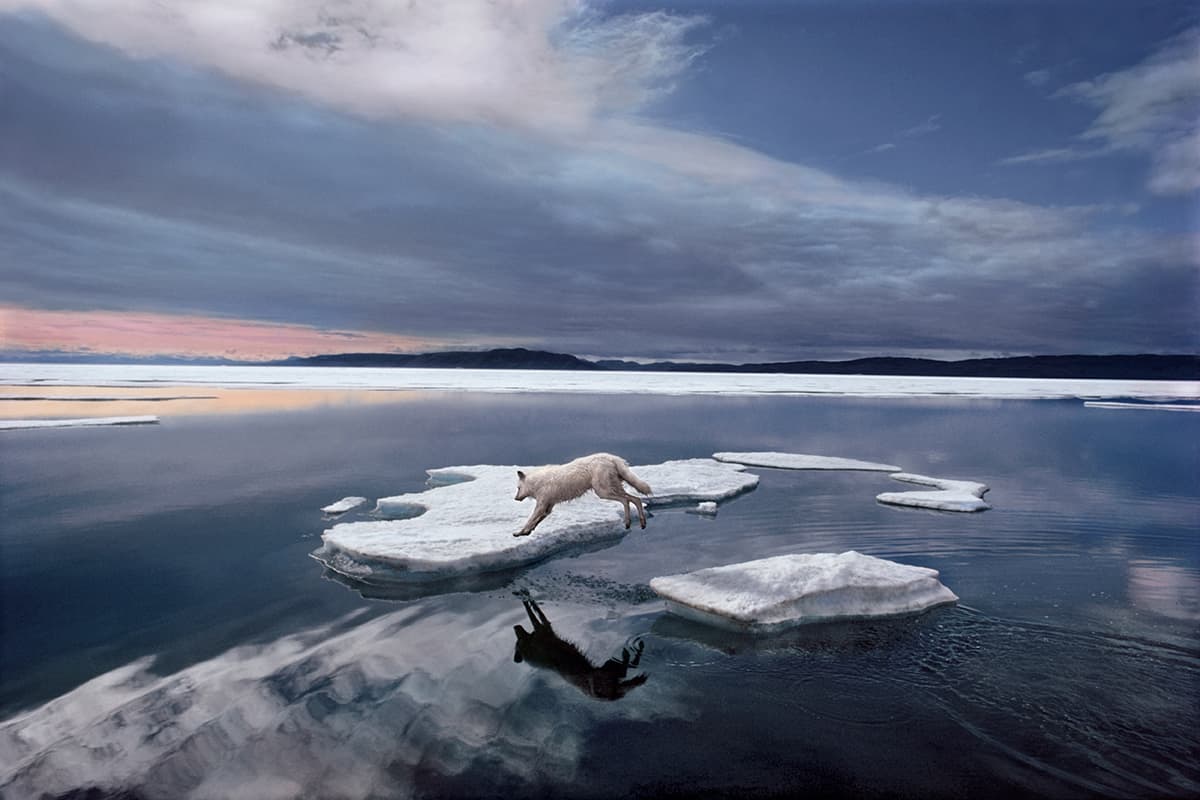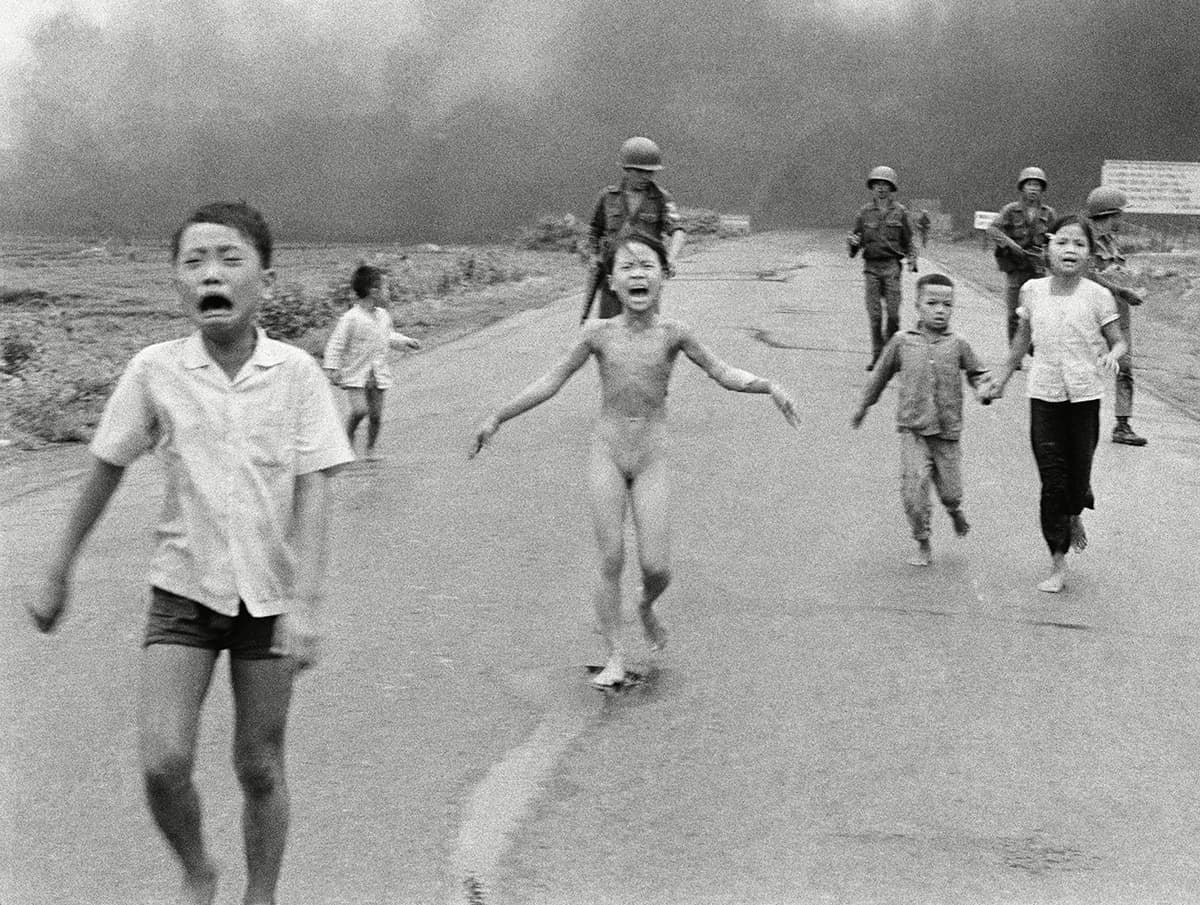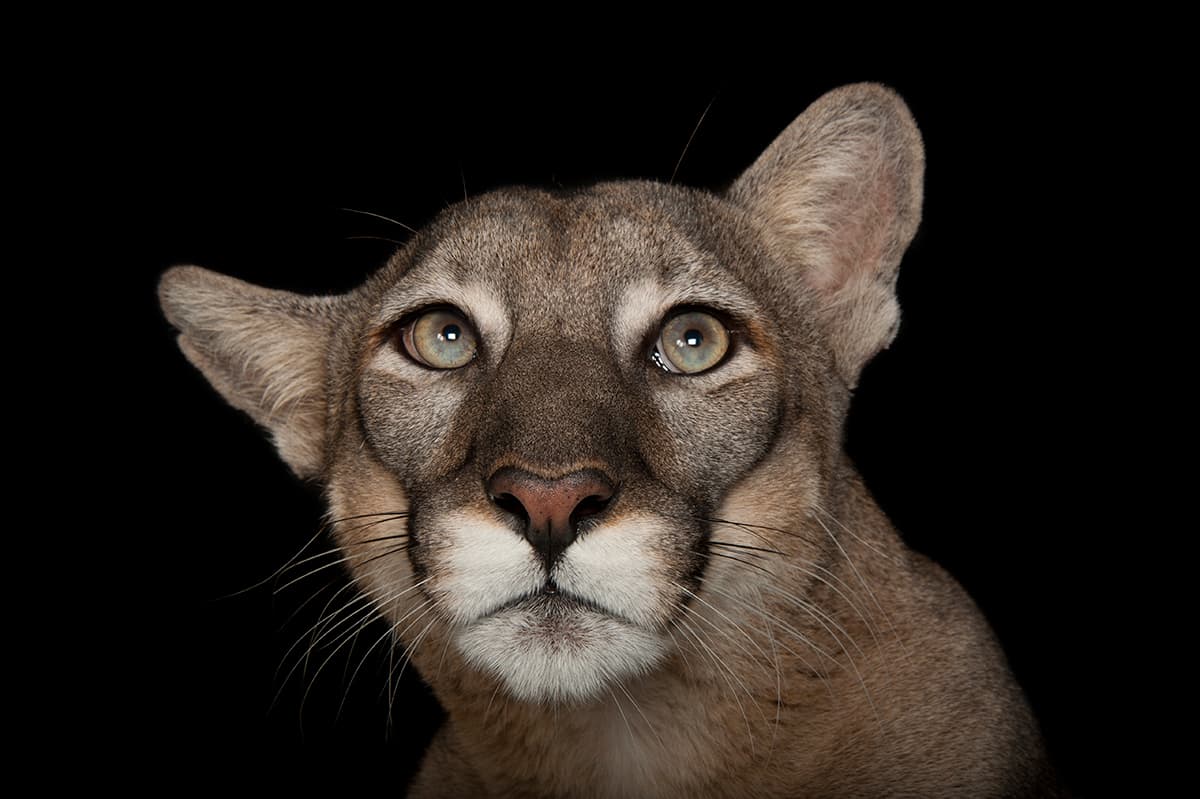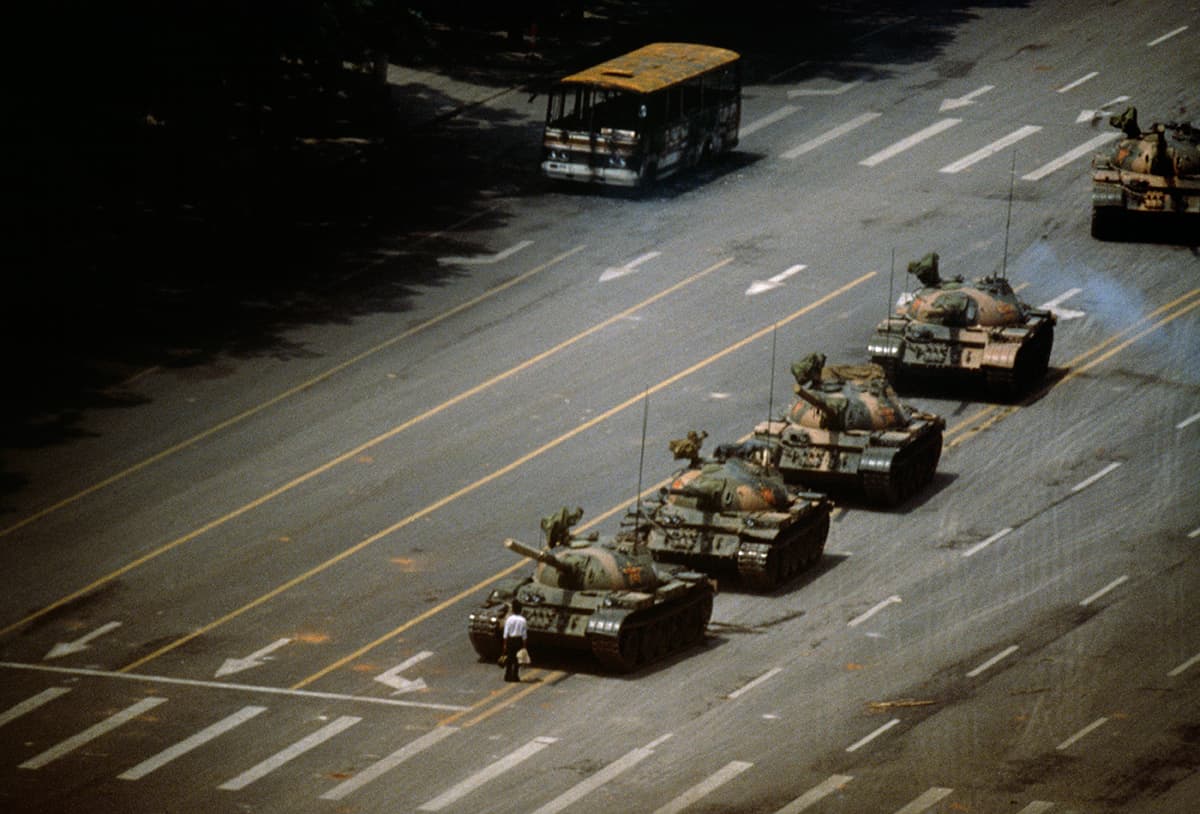Obviously, whittling down the many iconic Nikon photos is no easy task, but here’s our pick of the shots that have changed the world and changed people’s minds.
David Doubilet | Danko Island (2011)
Taken with: Nikon D3
David Doubilet is easily one of the most renowned underwater photographers working today and his split-level images taken around Antarctica are of particular note. This is one such shot showing a group of chinstrap and gentoo penguins vying for space on an iceberg. David shot this image with a Nikon D3, contained in a sturdy and waterproof Seacam underwater housing.
Steve McCurry | Afghan Girl (1984)
Taken with: Nikon F
Not only is this one of Steve McCurry’s most famous images, it easily stands as one of the most famous portraits ever captured. Nikon F3 in hand, McCurry was working on assignment for National Geographic where he was covering the plight of Aghanistan’s refugees. It was there that he happened upon Sharbat Gula with her green eyes and red headscarf. 17 years later McCurry returned to shoot her again.
Robert H. Jackson | The Murder of Lee Harvey Oswald (1963)
Taken with: Nikon S3
It can often be the case that the world’s most iconic images are a matter of absolute chance. That’s certainly the case here with Dallas Times-Herald photographer Robert H. Jackson’s image of the murder of JFK-assassin Lee Harvey Oswald by nightclub-owner Jack Ruby. Incredibly, Jackson had been present at the John F Kennedy assassination as well but, as the fatal shots were fired, Jackson was busy changing the film in his camera. In 1964, Jackson received the Pulitzer Prize for for this lucky shot that is safe in the annals of press photography history.
Bob Martin | World Swimming Championships (2013)
Taken with: Nikon D4
The mark of a really great photographer is one who can deal with subjects in which you have next to zero interest and still produce images that engage and make you want to stand up and applaud. Sports photographer Bob Martin is one such figure and this example taken at the 2013 World Swimming Championships in Barcelona is a fine example of his stunning body of work.
‘When the TV people on the edge of the pool were interviewing competitors who had been knocked out of the synchronized swimming competition, they switched on their interview lights, which illuminated the water droplets in the air for this picture,’ says Bob of this perfectly-timed photograph. ‘Luckily the best teams went last so when the Russian team came on to win, it all came together.’
Iconic Nikon photos continued…
Steve Schapiro | Martin Luther King (1965)
Taken with: Nikon S3
The Civil Rights movement of the 1960s is an event that has been generously served by the media but very few projects have the intimacy and access afforded by Steve Schapiro’s document of the Selma-to-Montgomery march for voting rights. The march became the epicentre of the Civil Rights movement and it’s this absorbing portrait of Martin Luther King that stands as one of its strongest images. What Schapiro managed to capture in his work was not only the charismatic leadership of King but also the strength, unity and world-changing significance of a movement, the ramifications of which are felt today.
Jim Brandenburg | Ellesmere Island (1980)
Taken with: Nikon F3
Renowned wildlife photographer Jim Brandenburg is a figure whose influence is unparalleled in the field. His images of white wolves taken in Ellesmere Island within the Canadian Arctic Archipelago is the body of work that is perhaps his most well-known. Brandenburg, during a National Geographic assignment to document a dog-sled expedition, captured a strong number of notable images during his trip but this is the one that is most remembered. Brandenburg had built something of a relationship with this pack of wolves, to the point that one day a cub came up and started chewing on his shoelaces. This image of an aplha male on the search for food quickly drew attention. It was something that had never been seen before.
Nick Ut | Napalm Girl
Taken with: Nikon F
On 8 June 1972, South Vietnamese soldiers dropped a napalm bomb on the Trang Bang district, an area that had recently been attacked and occupied by North Vietnamese forces. Civilians and South Vietnamese soldiers fled the scene to safety. However, a South Vietnamese air pilot, mistaking the group for enemy soldiers, turned the fire on them. Among the group was nine-year-old Phan Thi Kim Phuc who was so badly burned by the attack that she stripped off her clothes and ran screaming. Awaiting her was Associated Press photographer Nick Ut, who rushed her and several other children to a nearby hospital.
The image at the time was considered controversial (though this seems more to do with the nudity) but AP considered the image entirely newsworthy. It was put out on the AP newswire and this image, from a little village in Vietnam, spread around the world to become a haunting reminder of the brutality and futility of all wars.
Joel Sartore | Florida Panther
Taken with: Nikon D3
The best photography is that which can hold your attention at an aesthetic level and in doing so slowly reveal its true intention – the message that lies beneath. In 2005, Sartore’s wife, Kathy, was diagnosed with breast cancer. Sartore stayed home to look after their three children, meaning that his life as a National Geographic photographer was all but over. When Kathy recovered, Sartore locked into the idea of creating a project called Photo Ark that would talk about the fragility and ephemerality of life. It was then that he started creating portraits of some of the world’s endangered and threatened species. As Joel says, ‘Our hope is that people will look these creatures in the eyes and be inspired to care, while there is still time.’ In making this project, Sartore was able to create one of the most affecting and important wildlife projects of recent memory.
Stuart Franklin | Tank Man (1989)
Taken with: Nikon FE2
In May of 1989, there was a strange event unfolding in Tiananmen Square in Beijing. What at first appeared to be an almost carnivalesque atmosphere, soon revealed itself to be a stirring protest for freedom of speech, freedom of press and a rallying call against the corruption that many Chinese citizens saw as endemic of the government. Magnum photographer Stuart Franlkin, who was working on assignment for Time magazine was there to witness the unfolding of this historic event.
On the night of 4 June soldiers began moving in to clear the protesters and by the next morning they had been all but dispersed. On top of that, the military had occupied the lobby of Franklin’s hotel and journalists were searched and stopped from working. However, it was from Franklin’s balcony that he witnessed this extraordinary act of rebellion of a man stepping in front of a tank and blocking its path. The image was sent around the world and became an instant symbol of defiance.
Galen Rowell | Rainbow over the Potala Palace, Tibet (1981)
Taken with: Nikon FE
Galen Rowell was one of those blessed photographers who was able to visit a landscape and somehow draw out the extraordinary beauty and character of a location. His images are notable for their awesome and sublime aura. There’s something almost spiritual about them. This is perhaps down to the fact that Rowell was often more than an outsider looking in – in many ways he was part of the landscape. Rowell had been a keen mountain climber since the age of ten, and this resulted in a hands-on physical, even emotional, engagement with the landscape.
As Tom Brokaw states in the introduction to Galen Rowell: A Retrospective, ‘Galen Rowell was a man who went into the mountains, into the desert, to the edge of the sea, and to the last great wild places in the world to be absorbed by their grace and grandeur.’ Rowell died in a plane crash in 2002 but he left behind once-in-a-lifetime images such as this one of a rainbow falling over the Potala Palace in Tibet in 1981.
Frans Lanting | Dead Camel Thorn Trees (2011)
Taken with: Nikon D3X
Is it a photograph or a painting? As the figure behind the computer-desktop-friendly image is Frans Lanting, you have your answer. The location we see here is called Deadvlei, which is found in Namibia. The area, formerly a location replete with water, was host to copious numbers of camel thorn trees. However, as the climate changed, the trees – once full of life – began to die. The landscape quickly became an almost eerie alien location.
‘The image was made at dawn when the warm light of the morning sun was illuminating a huge red sand dune dotted with white grasses while the white floor of the clay pan was still in shade,’ says Lanting. ‘It looks blue because it reflects the colour of the sky above… The colours in the final printed image were true to the scene as I saw it – the only technical adjustment I made was the use of the graduated filter, which only reduces contrast but does not affect the colours of the scene.’
Joe McNally | The Pegasus (2003)
Taken with: Nikon D1X
While Joe McNally is perhaps better known for his technically brilliant portraits of individuals caught with the dual illumination sources of flash and atmospheric natural light, his best known image is this one of The Pegasus, a Navy UAV (unmanned aerial vehicle), resting at sunrise on China Lake Naval Air Station. McNally identifies the big three of photographic life being quality, colour and direction. Never is this more apparent than in this gel-lit image.
This image featured on the cover of National Geographic magazine and the story was the first one to be shot entirely on digital in the magazine. McNally shot using the D1X as he felt it was the first camera to give the same look as Kodachrome. Following the feature, the floodgates opened and many of NG’s articles were shot with DSLRs.

